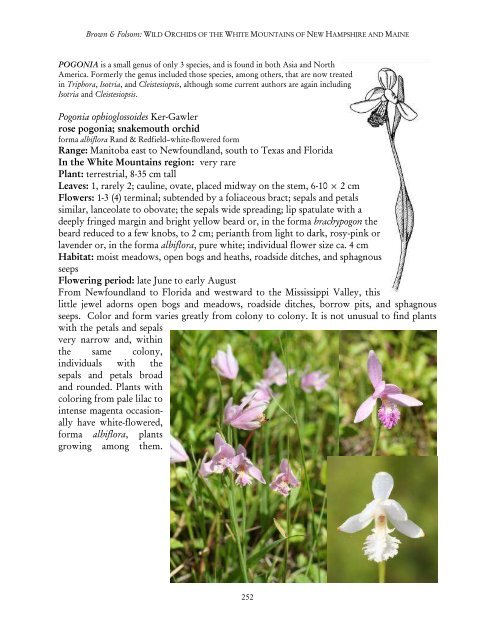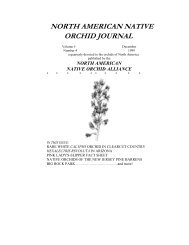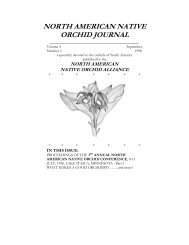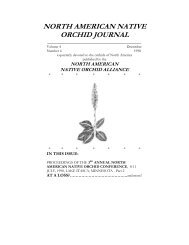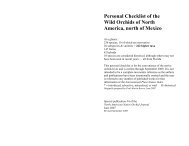north american native orchid journal - at The Culture Sheet
north american native orchid journal - at The Culture Sheet
north american native orchid journal - at The Culture Sheet
You also want an ePaper? Increase the reach of your titles
YUMPU automatically turns print PDFs into web optimized ePapers that Google loves.
Brown & Folsom: WILD ORCHIDS OF THE WHITE MOUNTAINS OF NEW HAMPSHIRE AND MAINE<br />
POGONIA is a small genus of only 3 species, and is found in both Asia and North<br />
America. Formerly the genus included those species, among others, th<strong>at</strong> are now tre<strong>at</strong>ed<br />
in Triphora, Isotria, and Cleistesiopsis, although some current authors are again including<br />
Isotria and Cleistesiopsis.<br />
Pogonia ophioglossoides Ker-Gawler<br />
rose pogonia; snakemouth <strong>orchid</strong><br />
forma albiflora Rand & Redfield–white-flowered form<br />
Range: Manitoba east to Newfoundland, south to Texas and Florida<br />
In the White Mountains region: very rare<br />
Plant: terrestrial, 8-35 cm tall<br />
Leaves: 1, rarely 2; cauline, ov<strong>at</strong>e, placed midway on the stem, 6-10 × 2 cm<br />
Flowers: 1-3 (4) terminal; subtended by a foliaceous bract; sepals and petals<br />
similar, lanceol<strong>at</strong>e to obov<strong>at</strong>e; the sepals wide spreading; lip sp<strong>at</strong>ul<strong>at</strong>e with a<br />
deeply fringed margin and bright yellow beard or, in the forma brachypogon the<br />
beard reduced to a few knobs, to 2 cm; perianth from light to dark, rosy-pink or<br />
lavender or, in the forma albiflora, pure white; individual flower size ca. 4 cm<br />
Habit<strong>at</strong>: moist meadows, open bogs and he<strong>at</strong>hs, roadside ditches, and sphagnous<br />
seeps<br />
Flowering period: l<strong>at</strong>e June to early August<br />
From Newfoundland to Florida and westward to the Mississippi Valley, this<br />
little jewel adorns open bogs and meadows, roadside ditches, borrow pits, and sphagnous<br />
seeps. Color and form varies gre<strong>at</strong>ly from colony to colony. It is not unusual to find plants<br />
with the petals and sepals<br />
very narrow and, within<br />
the same colony,<br />
individuals with the<br />
sepals and petals broad<br />
and rounded. Plants with<br />
coloring from pale lilac to<br />
intense magenta occasionally<br />
have white-flowered,<br />
forma albiflora, plants<br />
growing among them.<br />
252


